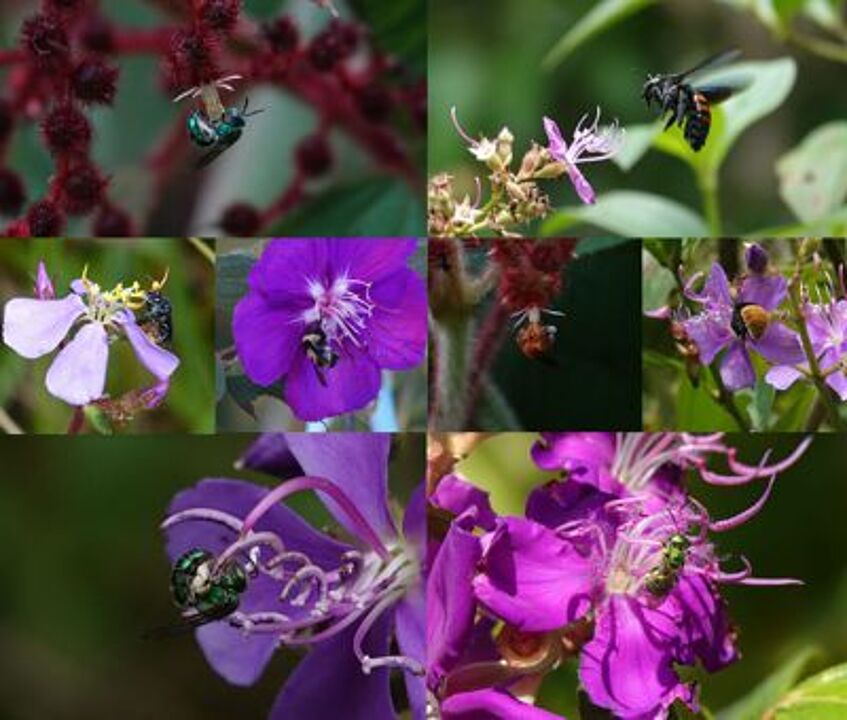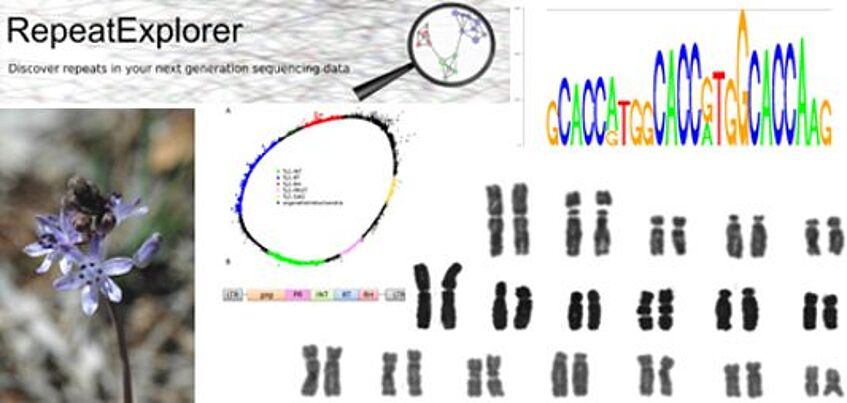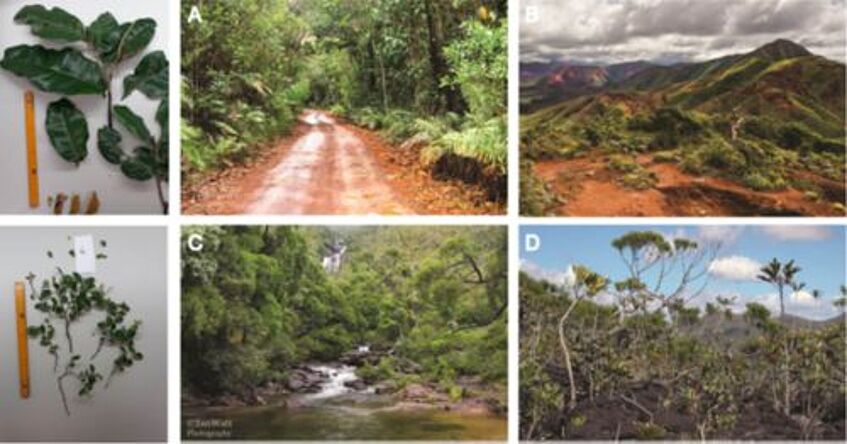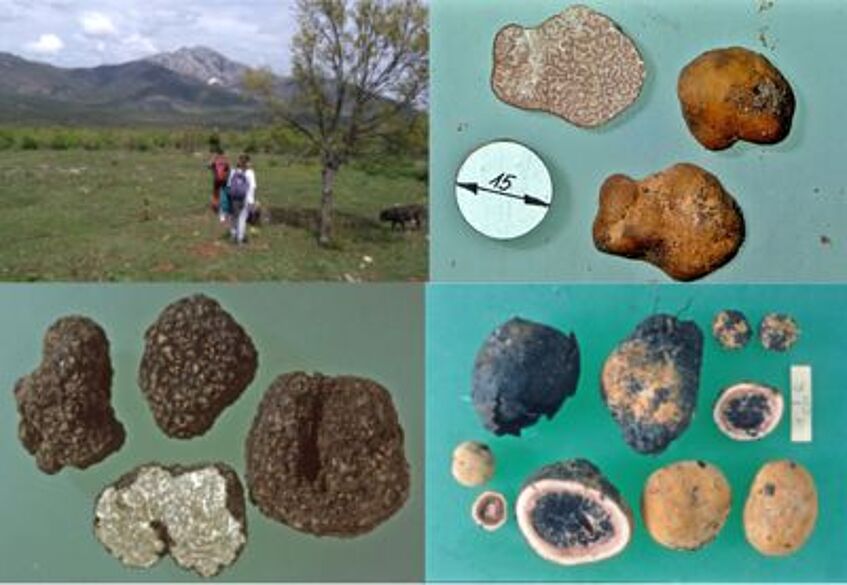WS 2025: Structural diversity in plants and fungi: from form to function
Do different bees buzz different flowers of Melastomataceae differently?
Species of the tropical plant family Melastomataceae are mostly pollinated by bees through a specialized pollination mechanism called buzz-pollination. During buzz-pollination, bees apply mechanical vibrations to flowers in order to extract pollen, which is commonly concealed in tubular structures such as poricidal anthers (anthers only opening by a small apical pore). More than 10000 bee species can perform buzz-pollination, but how different bees buzz (which frequency, how long, which part of the stamen) and whether different bees prefer different flowers remains unknown. In this project, you will help analyse video material from bee pollinator monitoring of Melastomataceae to study bee pollinator communities and the vibrational profiles of different bees, working with different softwares (e.g., Audacity) commonly used in bioacoustics. Data analyses will be performed in R to explore patterns of bee taxonomic diversity, bee buzz diversity and the diversity of plant species visited.
Supervisor: Agnes Dellinger

Palynology in practice
Are you interested in pollen? In collaboration we will find an appropriate project where you can investigate pollen morphology with light- and scanning electron microscopy and/or pollen ultrastructure using transmission electron microscopy. This would be followed by training in describing pollen and illustrating your results. Subjects might include particular extant plant genera, selected plant species, honey, pollen on/inside insects, or fossil material. Students considering palynology for their MSc thesis are especially welcome.
Supervisors: Fridgeir Grímsson & Silvia Ulrich

Evolution of repeatomes of basic diploid cytotypes in genus Prospero (Hyacinthaceae)
The circum-Mediterranean monocotyledonous genus Prospero (Hyacinthaceae) is well-known for its chromosomal diversity that is not accompanied by morphological diversification. In the most widespread Prospero autumnale complex several diploid cytotypes differing in base chromosome numbers (x = 5, 6 and 7) and genome sizes are known to hybridize forming homolploid diploid hybrids and allopolyploids. The current project aims to analyse repetitive DNA content of three basic diploid cytotypes of Prospero using NGS (Illumina) genome skimming data and dedicated, user-friendly RepeatExplorer pipeline. Genome sizes will be measured using flow cytometry. The data will be interpreted in the phylogenetic context and will provide novel insights into the dynamics of genome size evolution in the genus.
Supervisor: Hanna Schneeweiss

Hidden diversity in one of the world’s most unique island floras
Do you want to discover how new species are recognized from genetic data and how hidden diversity comes to light? Join a project that investigates species boudaries, cryptic species, and hybridisation in the spectacular New Caledonian radiation of Diospyros (persimmons). The work will provide hands-on experience in evolutionary botany, applying whole genome data to species delimitation, admixture and hybrid detection. The project is ideal for students eager to sharpen their molecular systematics skills, while contribute to conservation and to a deeper understanding of how biodiversity evolves.
Supervisor: Ovidiu Paun

Molecular identification of hypogeous ascomycetes ("truffles") from North Macedonia
Hypogeous ascomycetes, commonly termed "truffles", are a species rich group with peculiar ecology, producing their fruitbodies under ground, their spores being dispersed by mammals who consume them, locating them by their strong odor produced at maturity. As their fruitbodies are hidden in the soil and require special knowledge for being found, their species diversity is insufficiently known, particularly in regions like the Balkans. For the specific research project, DNA extracts of hyopgeous ascomycetes collected in North Macedonia are available, for which barcoding sequences for molecular identification shall be produced. Techniques applied include spectrophotometric checking of quality and quantity of DNA extracts, PCR, gel-electrophoresis, sequencing, comparison of results with reference DNA databases (GenBank, UNITE), as well as basic molecular phylogenetic analyses.
Supervisor: Hermann Voglmayr, Irmgard Greilhuber & Michael Barfuss

Environmental stress at the cellular level
Drought periods as a part of fluctuating environmental changes have forced plants to develop various adaptation strategies. On the cellular level, loss of water is causing mechanical strains to cells and tissues, as well as structural rearrangements. This research project is focused on osmotic stress of plant cells. We will test specific dyes to visualize the shape of cells with and without turgor. We compare the anatomy of leaves in seed plants (cross sections) or in different moss species. The applied methods include microscopy, cell biology, or microtome sections.
Supervisor: Ingeborg Lang

Does bee pollinator effectiveness decrease along elevational gradients?
Bees are the most important pollinators of angiosperms, and particularly prevalent as pollinators in the plant family Melastomataceae. But many bee species are also highly susceptible to harsh abiotic enviornmental conditions, with marked reductions in abundance and diversity at high elevations and high latitudes, where common cold and rainy weather precludes foraging. Plants may respond differently to these reductions in bee pollinator effectiveness, including shifts to other pollinators, shifts to autogamy, increases in floral longevity or facilitated pollen release even across few visits. In this project, you will explore whether Melastomataceae species growing at high elevations indeed retain more pollen in their flowers and have received less pollen on their stigmas than relatives occurring at lower elevations, and whether these patterns differ among species with different morphologies. You will use liquid particle counters and fluorescence microscopy to count pollen and analyse data in R.
Supervisor: Agnes Dellinger

